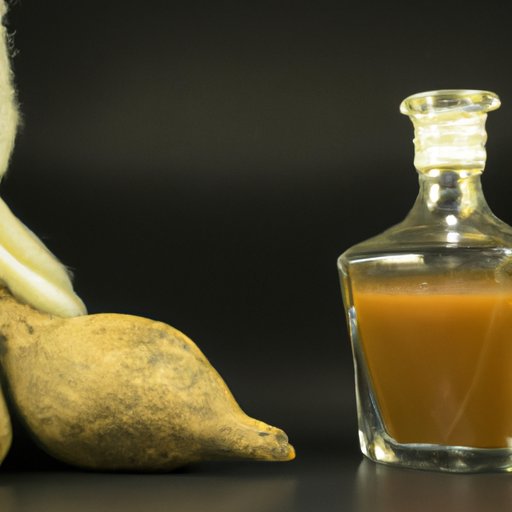
Introduction
A pulled groin is a relatively common injury that can occur when the muscles in the inner thigh are stretched beyond their limits. It can cause significant pain and discomfort, making it difficult to perform daily tasks and engage in physical activity. The good news is that with proper treatment, most cases of pulled groins can heal within a few weeks. In this article, we’ll explore the causes, symptoms, and treatment options for a pulled groin, as well as some helpful tips for preventing future injuries.
Causes and Risk Factors
A pulled groin is typically the result of overuse or sudden twisting movements that cause the muscles in the inner thigh to become stretched or torn. It is often seen in athletes who participate in sports that require quick directional changes, such as soccer, basketball, and hockey.
Several risk factors can increase your likelihood of developing a pulled groin. These include:
- Previous groin injury
- Weak or poorly conditioned leg muscles
- Stiffness or imbalances in the hip muscles
- Age (older adults are more susceptible to muscle strains and tears)
Fortunately, there are steps you can take to minimize your risk of developing a pulled groin. Make sure you warm up properly before engaging in physical activity, focus on exercises that strengthen the muscles in your legs, and avoid sudden movements that may strain your muscles.
Natural Remedies
In addition to seeking medical treatment, there are several natural remedies you can try to help alleviate pain and inflammation associated with a pulled groin. Here are a few:
Stretches to Help Alleviate Pain and Inflammation
Performing gentle stretches can help loosen up tight muscles and promote healing. A few stretches that can be helpful for those with a pulled groin include:
- Seated butterfly stretch
- Standing hamstring stretch
- Lunge stretch
Use of Ice and Heat Packs
When you first experience a groin strain, ice can help reduce swelling and relieve pain. Apply ice to the affected area for 20 minutes at a time, several times a day. After a few days of icing, switch to heat therapy to improve blood flow to the area and promote healing. Use a heating pad or take a warm bath to soothe sore muscles.
Supplements that Can Help with Recovery
Taking certain supplements may help reduce inflammation and promote healing after a pulled groin. Some options to consider include:
- Turmeric
- Ginger
- Omega-3 fatty acids
- Vitamin C
Treatment Options
If you have a more severe case of pulled groin, your doctor may recommend physical therapy or massage therapy to help speed up the recovery process. In some cases, surgery may be required to repair the damaged muscles.
Physical Therapy Exercises to Strengthen and Stretch the Affected Area
Your physical therapist may recommend a series of exercises designed to strengthen and stretch the muscles in your groin and inner thigh. These exercises can help improve flexibility and prevent future injuries. Examples of exercises may include:
- Clamshells
- Bridge lifts
- Side-lying leg lifts
Massage Therapy for Pain Relief
Massage therapy can be an effective way to relieve pain and promote healing in those with a pulled groin. Massage can help improve blood flow to the affected area, reduce muscle tension, and release endorphins, which are the body’s natural painkillers.
Surgery as a Last Resort in Severe Cases
If your injury is severe, surgery may be necessary to repair torn muscles or ligaments. Your doctor will discuss this option with you if they believe it’s necessary.
Beginner’s Guide for Treating a Pulled Groin
If you’re dealing with a pulled groin, there are several things you can do to promote healing and avoid re-injury:
Importance of Rest and Hydration
Rest is crucial for allowing your muscles to heal properly. Avoid activities that may aggravate your injury and give your body time to recover. Hydration is also essential for promoting healing and preventing muscle cramps. Drink plenty of water and avoid dehydrating beverages like alcohol and caffeine.
Tips for Healing and Avoiding Re-Injury
Here are a few additional tips that can help you recover from a pulled groin:
- Apply ice or heat as needed to manage pain and inflammation
- Wear supportive clothing or compression wraps to help reduce swelling
- Stick to low-impact exercises that won’t put stress on your groin muscles
- Gradually increase activity as your injury improves
When to Seek Medical Attention
If your pain is severe or doesn’t improve with rest and self-care measures, it’s important to seek medical attention. You should also see a doctor if you experience any other symptoms, such as swelling, bruising, or a popping sensation in the groin area.
Holistic Approach to Preventing Future Injuries
Once you’ve recovered from a pulled groin, it’s important to take steps to prevent future injuries from occurring. Here are a few things you can do:
Strengthening the Muscles Around the Groin Area
Focusing on exercises that help strengthen the muscles in your hips, thighs, and glutes can help reduce your risk of developing a pulled groin. Examples of exercises to consider may include:
- Squats
- Lunges
- Deadlifts
Anti-Inflammatory Foods That Can Promote Healing and Tissue Repair
Diet plays a crucial role in promoting healing and reducing inflammation throughout your body. Incorporating anti-inflammatory foods into your diet can help reduce your risk of future muscle strains and tears. Some examples of anti-inflammatory foods to consider include:
- Leafy green vegetables
- Berries
- Salmon
- Nuts and seeds
- Turmeric
Conclusion
While a pulled groin can be a painful and frustrating injury, it’s important to remember that most cases can heal within a few weeks with the right treatment. If you’re experiencing a pulled groin, make sure you get plenty of rest, stay hydrated, and consider using natural remedies to help alleviate pain and inflammation. With time and commitment, you can recover from a pulled groin and prevent future injuries from occurring.





